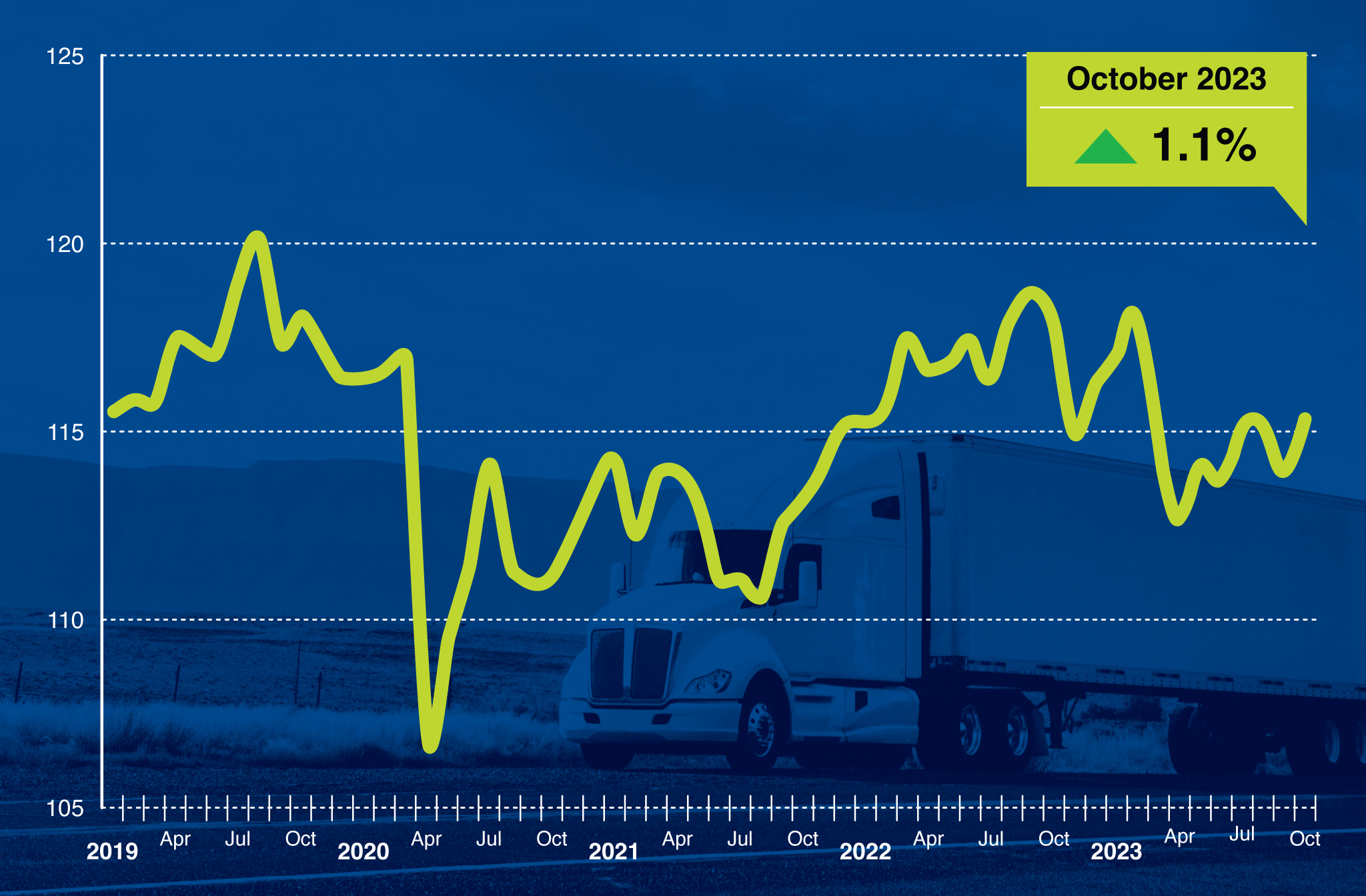Washington — American Trucking Associations’ advanced seasonally adjusted (SA) For-Hire Truck Tonnage Index increased 1.1% in October after declining 1.1% in September. In October, the index equaled 115.2 (2015=100) compared with 113.9 in September.

“After hitting a floor in April, tonnage has slowly and inconsistently improved, but remains 3% below its recent peak in September 2022,” said ATA Chief Economist Bob Costello. “Despite the monthly gain, truck freight remains soft as it continues to contract on a year-over-year basis. It is important to remember that our for-hire truck freight index, which includes both truckload and LTL freight, is dominated by contract freight with minimal amounts of spot market loads. The traditional spot market remains much weaker than contract tonnage.”
September’s decline was unchanged from our October 24 press release.
Compared with October 2022, the SA index fell 2.1%, which was the eighth straight year-over-year decrease. In September, the index was down 4.1% from a year earlier.
The not seasonally adjusted index, which represents the change in tonnage actually hauled by the fleets before any seasonal adjustment, equaled 119.7 in October, 6.3% above the September level (112.5). In calculating the index, 100 represents 2015. ATA’s For-Hire Truck Tonnage Index is dominated by contract freight as opposed to spot market freight.
Trucking serves as a barometer of the U.S. economy, representing 72.6% of tonnage carried by all modes of domestic freight transportation, including manufactured and retail goods. Trucks hauled 11.46 billion tons of freight in 2022. Motor carriers collected $940.8 billion, or 80.7% of total revenue earned by all transport modes.
ATA calculates the tonnage index based on surveys from its membership and has been doing so since the 1970s. This is a preliminary figure and subject to change in the final report issued around the 5th day of each month. The report includes month-to-month and year-over-year results, relevant economic comparisons, and key financial indicators.